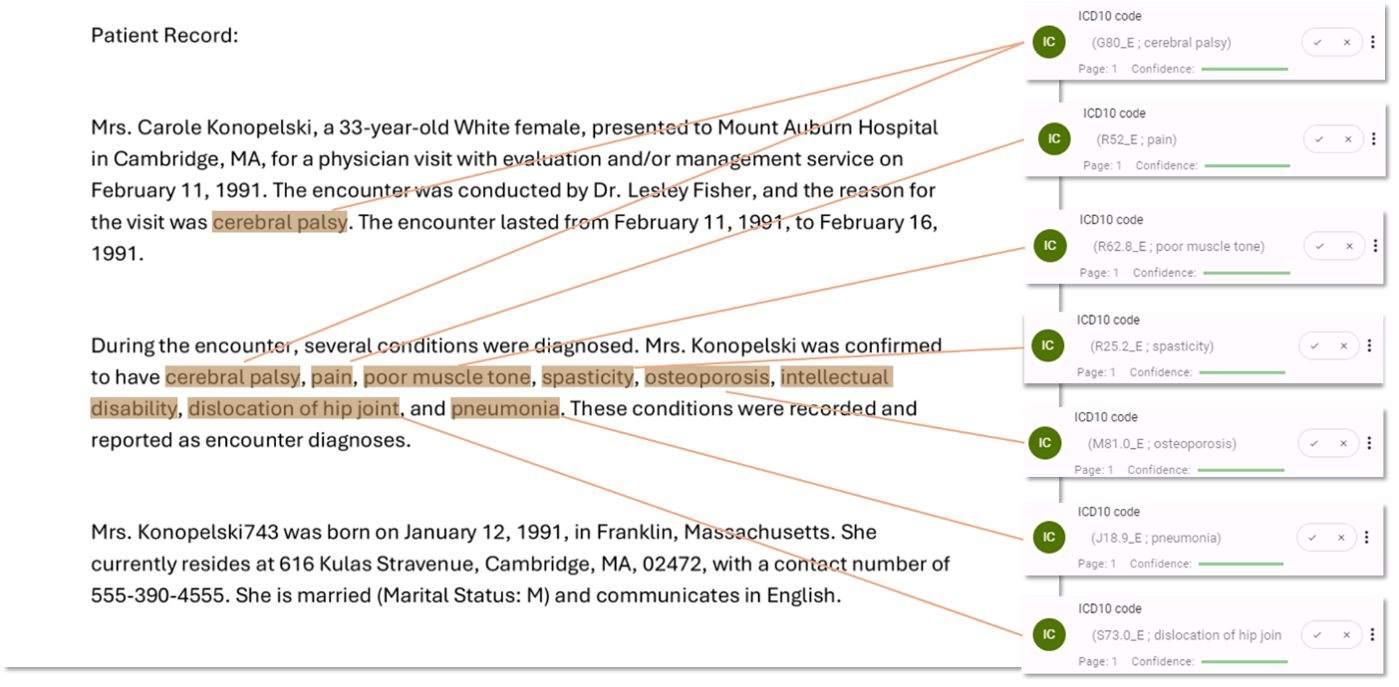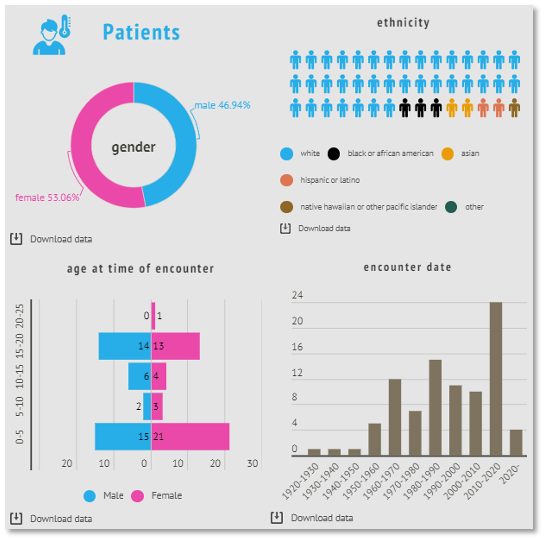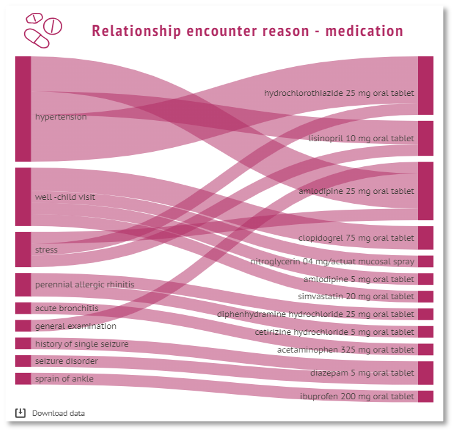
Healthcare case study: Patient Records
Whether it is speeding up of administrative processes or running analytics on patient records, one of the key difficulties is to capture relevant and accurate information from unstructured health records.
The difficulties arise for a lot of reasons:
- – The patient documents must be managed with an extremely high level of confidentiality, limiting the use of any external API for services such as the OCR, tabular data extraction or the use of very large private LLMs such as ChatGPT or Gemini.
- – The documents related to the health of the patients may be very diverse including the scan of handwritten documents.
- – No matter how small is the number of mistakes made by AI rapid review by subject matter experts is critical for accurate decision-making and analytics
In a recent case study for a provider network, we evaluated the use of private open-source LLMs and specialized supervised AI models to extract information from a set of medical encounter reports generated from synthetic health records available on the MITRE website. We have proven that:
- – AI may be used to extract the information with a high level of accuracy
- – On-premise or private installation for healthcare domain is feasible
- – Human-in-the-loop UI allows subject matter experts rapidly review AI output, still achieving more than 10-fold speed-up over manual processes and .
As an example, we have extracted the reason for the encounters and we have requested to associate it with the related ICD-10 code using the following prompt:

The information which could be extracted with or without fine-tuning the AI models is very diverse coming from the synthetic encounter records published by MITRE. Still, we have been able to capture, in addition to the reason for the encounter and the ICD-10 codes, the names of the patients and physicians, the patient ethnicity, date of birth, QALY, DALY, medications proposed by the physician, medications stopped by the physicians, etc.
AgileDD AI platform can be installed on-premise or on a private cloud for use with private patient records. In addition, its human-in-the-loop user-interface allows the users to correct any mistakes done by AI and even utilize the reviewed data for fine-tuning AI models.
Each of the captures is saved in a relational database with its associated source (document, page, position on the page)and its confidence factor. The use of AgileDD API’s provides a lot of agility to export the captured information at scale for further analysis like in the infographics below:



